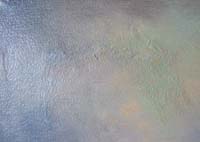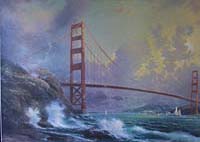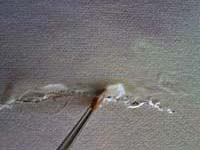Repairing a Torn Canvas Painting
This is a canvas repair that should normally be done by a professional conservator. A torn painting was brought to me which needed to be repaired. This painting happened to be a 30 inch by 20 inch mylar print on canvas by the artist Thomas Kinkade, entitled "Golden Gate Bridge."
After a great deal of research I discovered a thermoplastic adhesive material that was perfectly suitable.
In the closeup (Figure 1) you see the tear from the front side of the painting. The jagged tear was caused by a forklift, and was approximately 3 inches long. The red oval (Figure 2) indicates the damaged area.
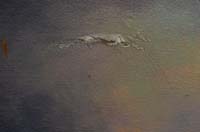
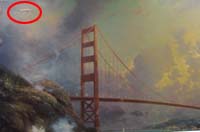
The canvas was laid face down on a clean smooth surface.
The tools needed for this canvas repair are: a clothing iron, a heavy metal spatula, scissors, a non-heated iron, a putty knife, and a palette knife. The materials: one linen canvas patch cut to size for the patch, one piece of scrap linen canvas to act as a heat transfer, the thermoplastic film, and some archival paste adhesive for the torn mylar print, in this case YES glue (Figure 3).
The thermoplastic adhesive film is laid on top of the linen canvas patch then the linen canvas is cut to size (Figure 4).
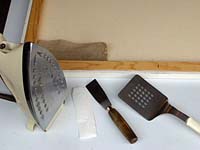

The damaged area should be groomed. That is, all stray threads should be smoothed out so there is no discernible bulge in the canvas. Sometimes weaving of the threads together is necessary for an even surface. This procedure may be time consuming.
The adhesive is placed over the tear for placement (Figure 5).
The paper backing is then removed (Figure 6).
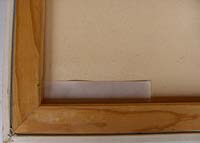
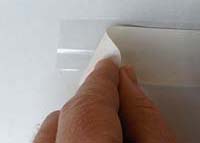
The adhesive is again placed over the tear. In this case, the thermoplastic adhesive needed to be positioned under the stretcher bars with the aid of a palette knife (Figure 7).
The piece of scrap linen canvas is placed over the mylar side of the thermoplastic adhesive to prevent scorching of the canvas. A heated iron is used to heat up the adhesive so that it adheres to the damaged canvas (Figure 8).
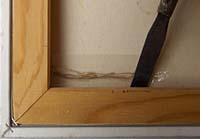

A heavy spatula was heated on the iron to be used on the thermoplastic adhesive under the stretcher bars (Figure 9).
The mylar backing is then removed. The linen patch is carefully placed over the thermoplastic adhesive. Again in this case the patch needed to be positioned under the stretcher bars with the aid of a palette knife (see Figure 7). The linen transfer scrap is placed over the linen patch to prevent scorching. Spatula is heated up (Figure 9). Then heat is applied as before (Figure 10).
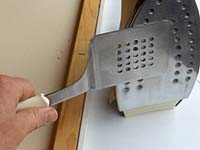
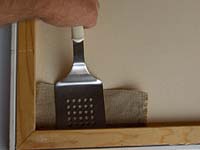
The canvas was flipped over to repair the front of the torn painting (Figure 11). An archival paste adhesive, YES glue, was applied with a small brush to the underside of the mylar print (Figure 12).
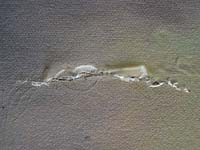
Pressure was applied to the glued area to flatten the mylar as much as possible. Appropriate weights were carefully used. A wooden block was placed under the damaged area to prevent additional damage to the canvas. When the paste dried the indentations were filled with acrylic gesso (Figure 13 and Figure 14). I used gesso because I didn't have a true filler. Use of a modeling paste may suit your needs. You may need to do a little research.
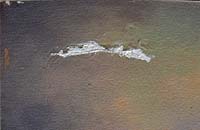
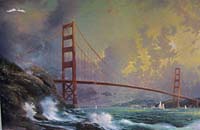
Oil colors were mixed to match the colors of the print and applied (Figure 15). This is a critical step. If you do not have a good sense of color the repair will be immediately apparent. Take your time and build the color up slowly. The repair will be easier to mask if the painting has a heavy impasto. This painting, essentially, had no surface texture because of the smooth mylar surface.
The final canvas repair is below (Figure 16). This Thomas Kinkade print of the, "Golden Gate Bridge," will not have the value of an undamaged print but it can be viewed with pleasure.
